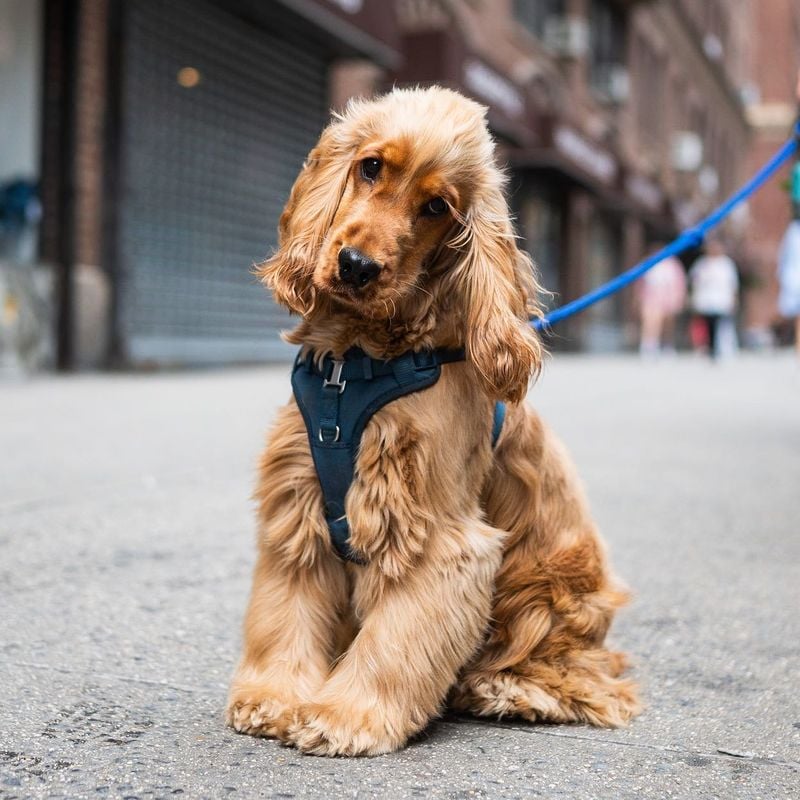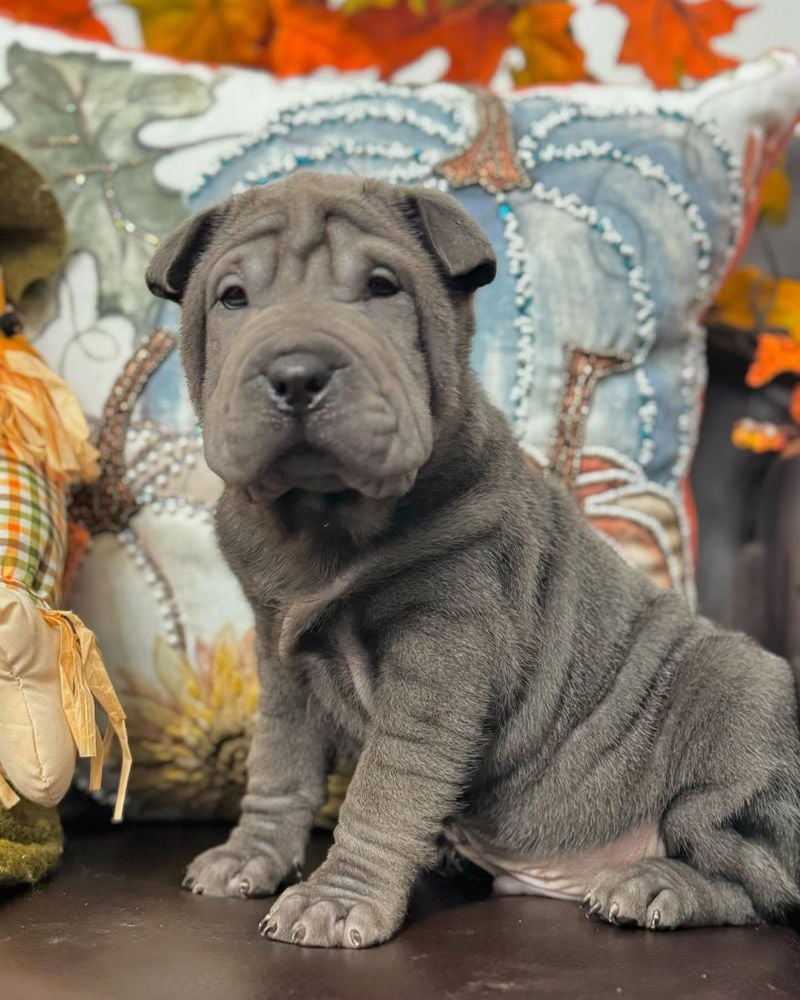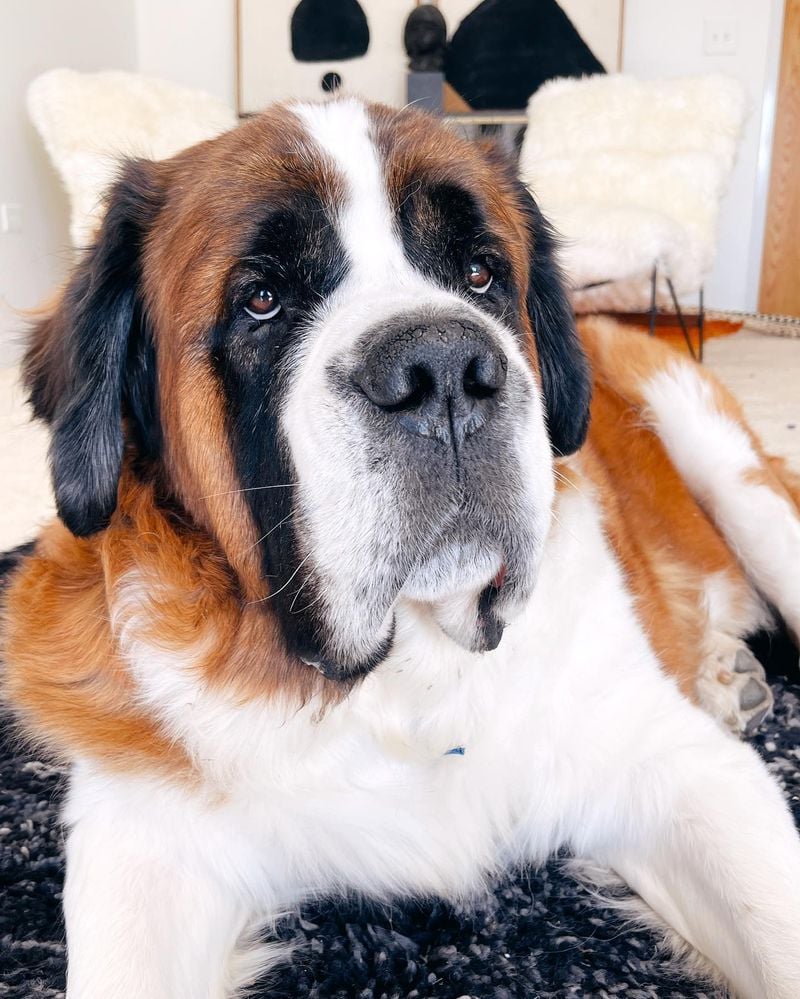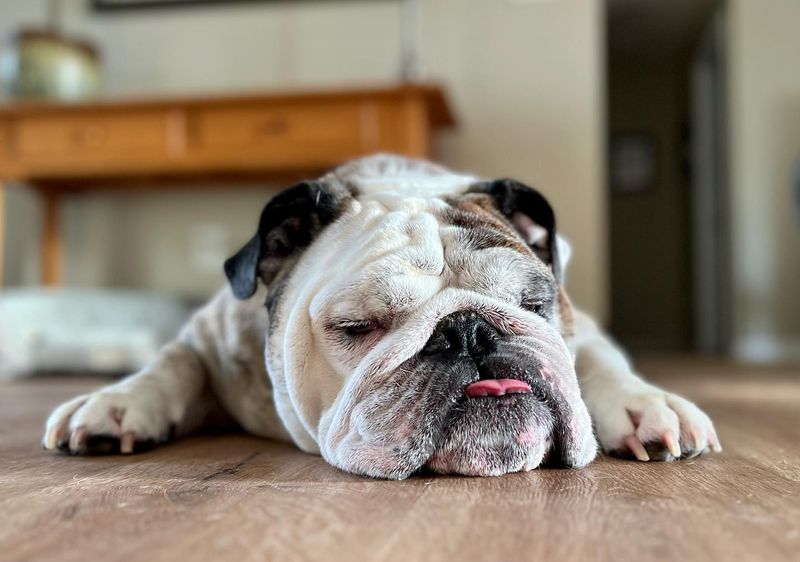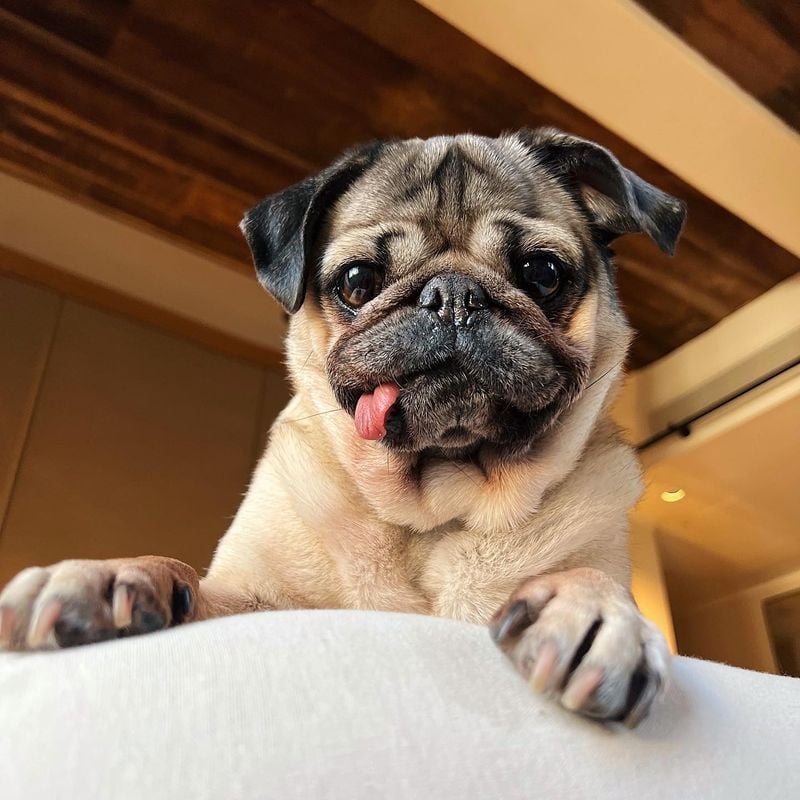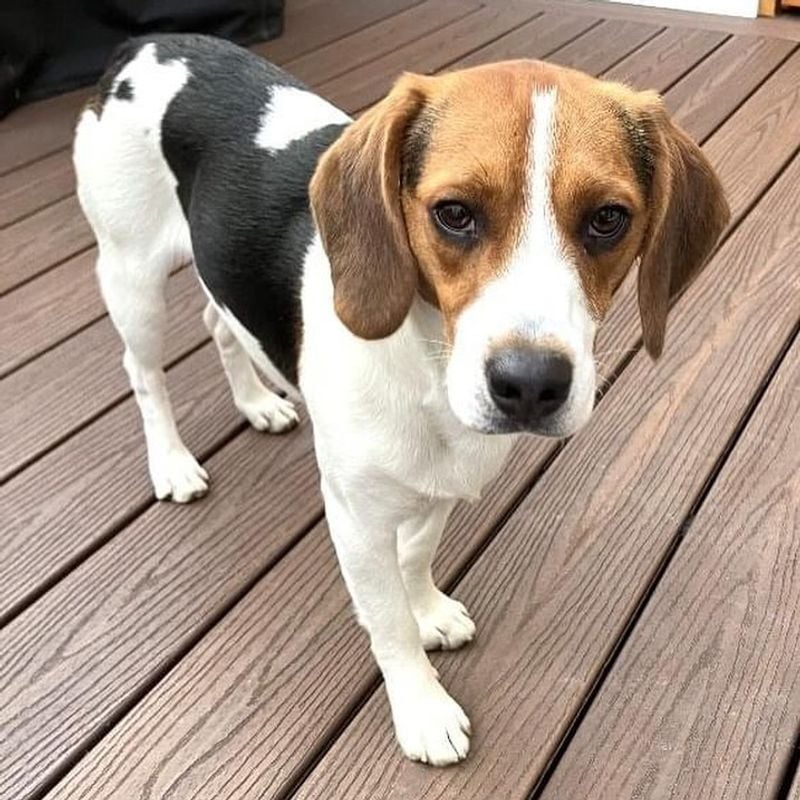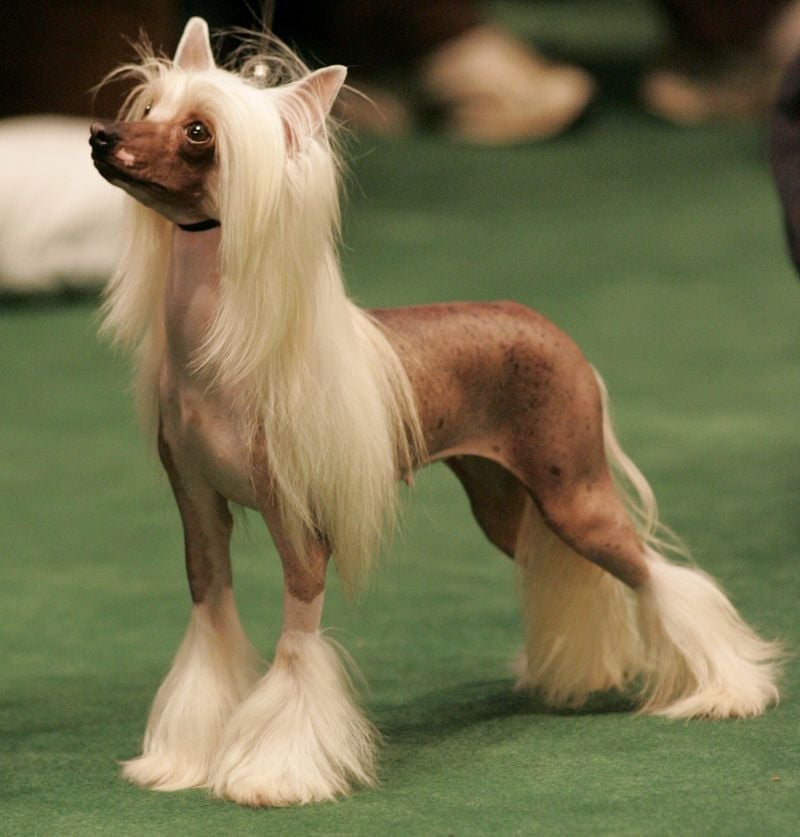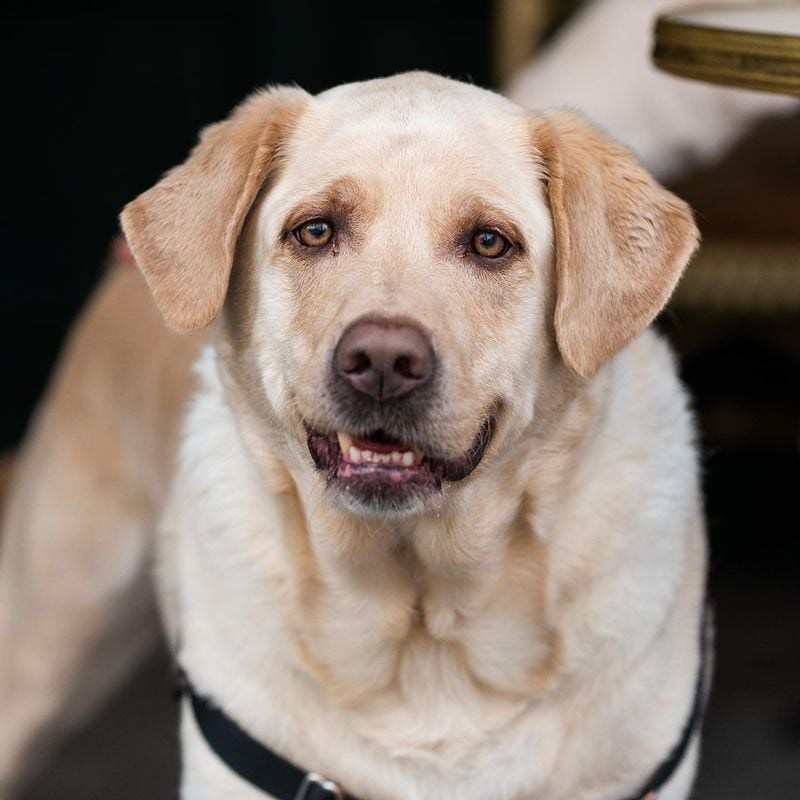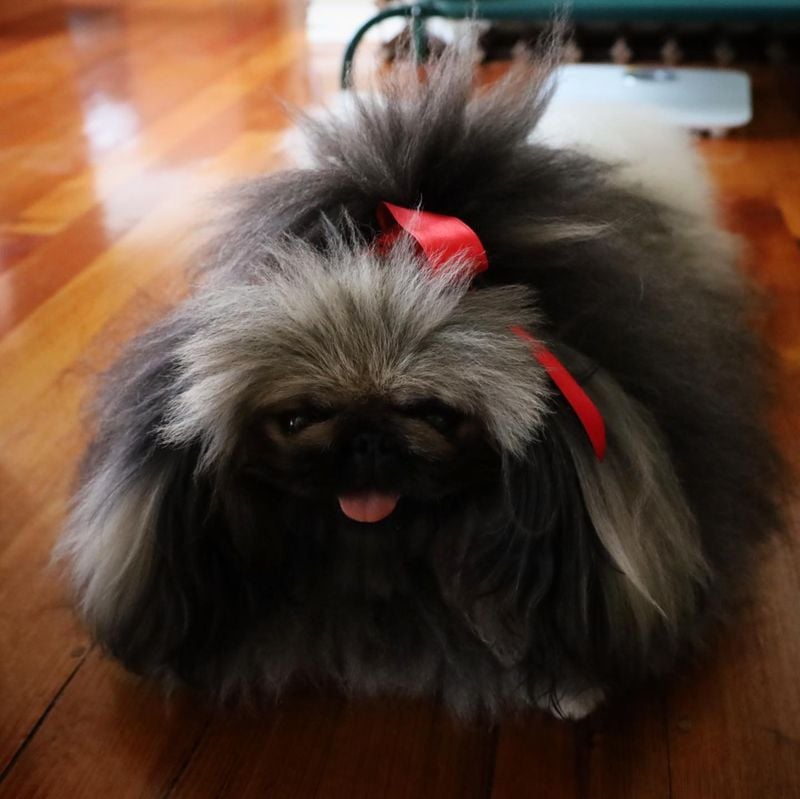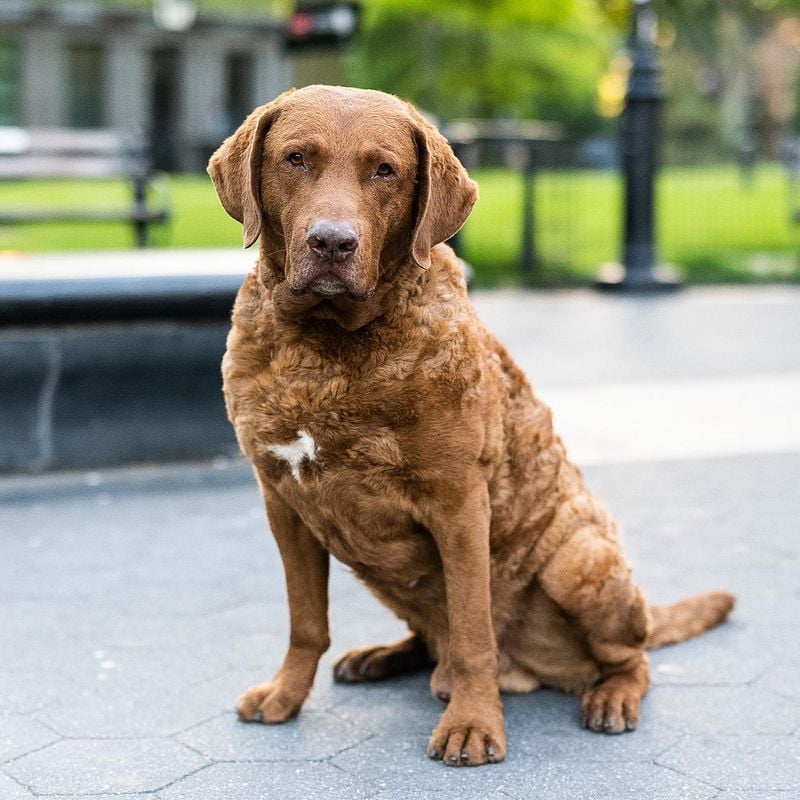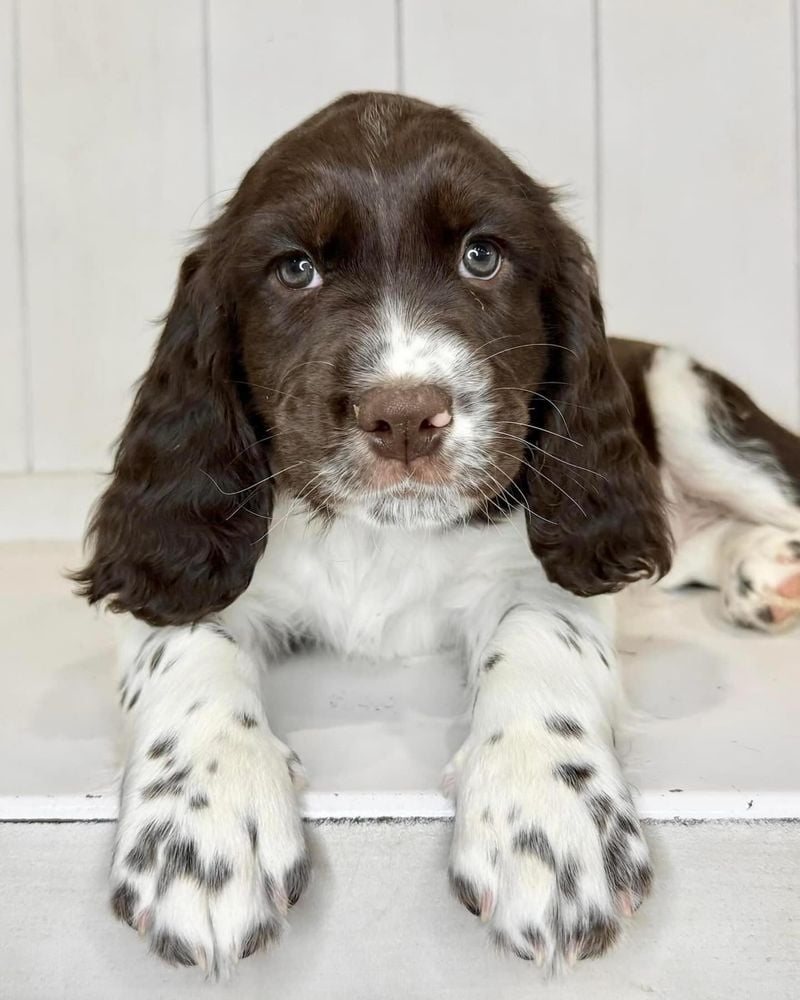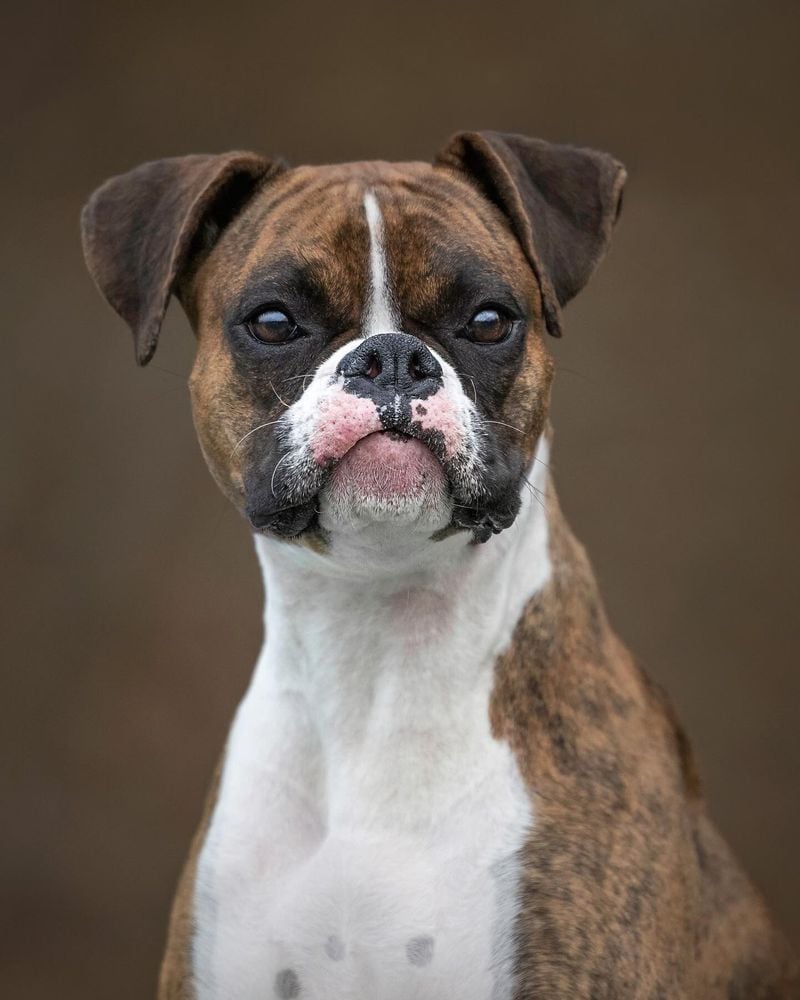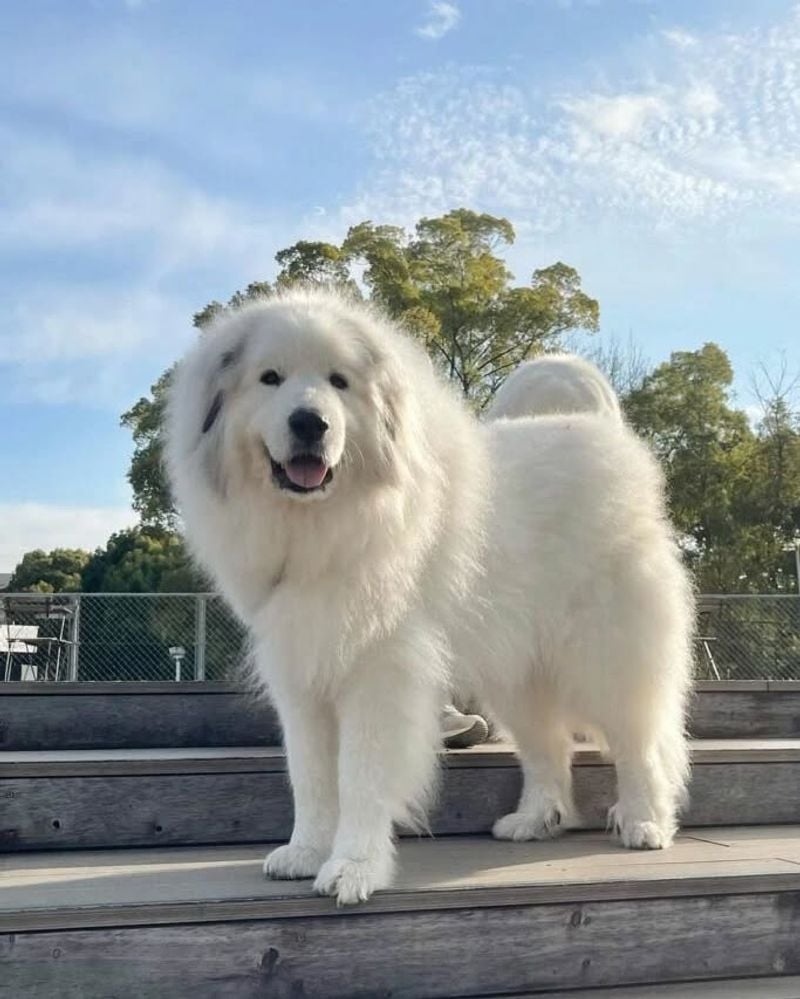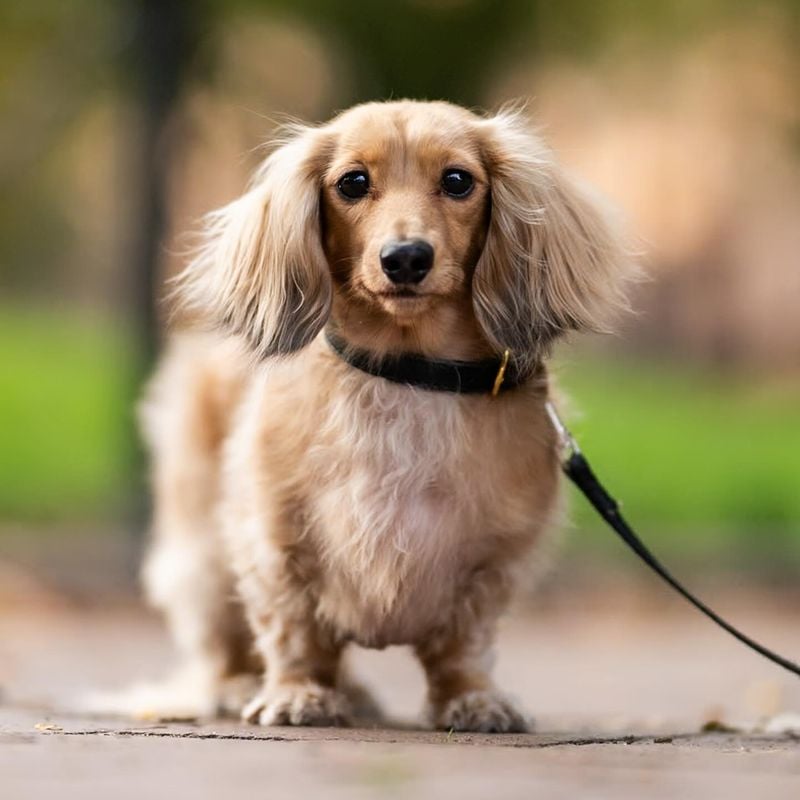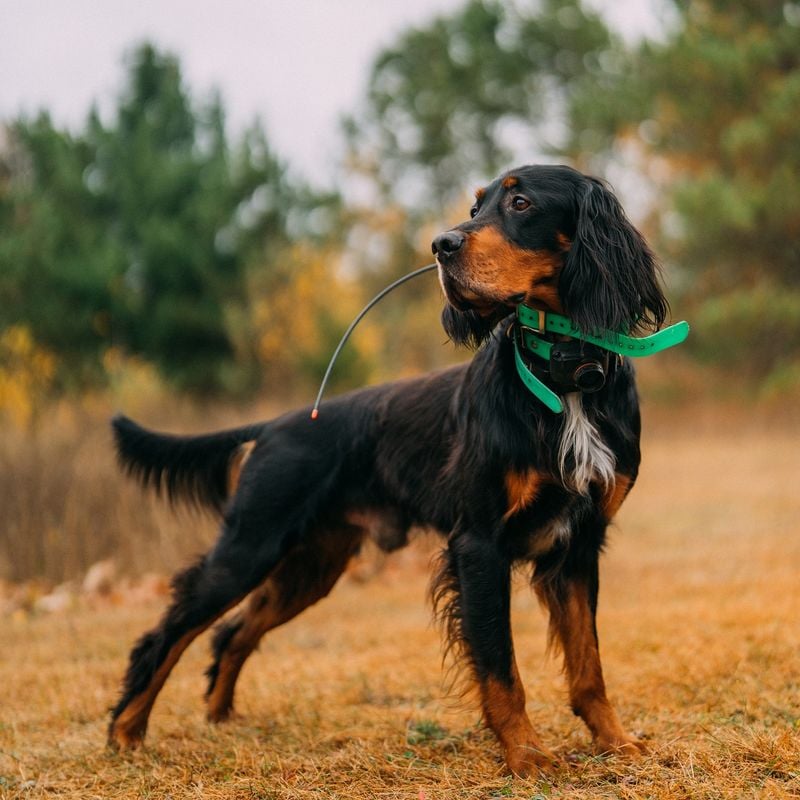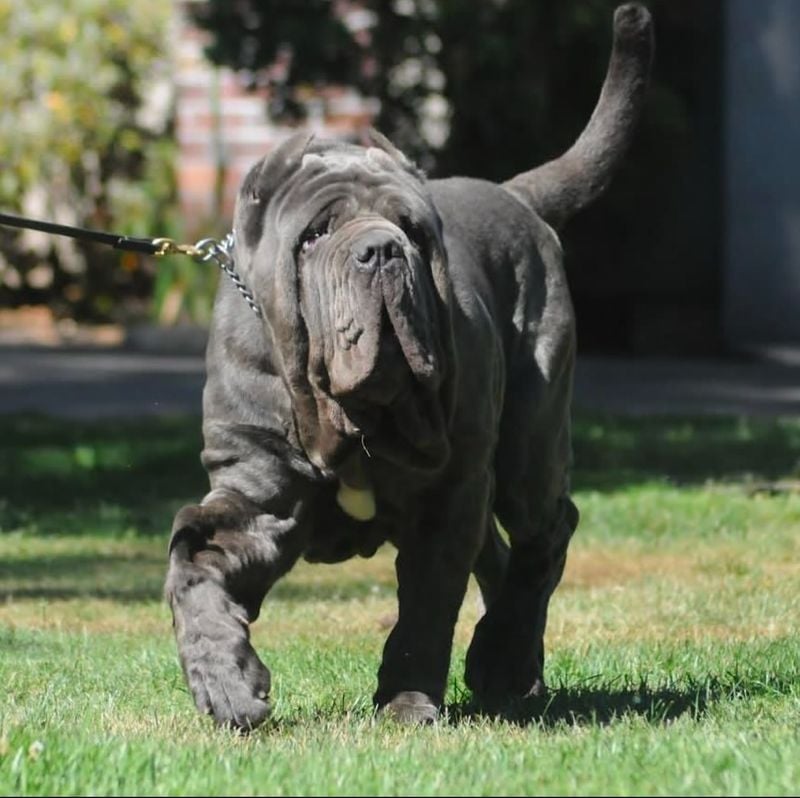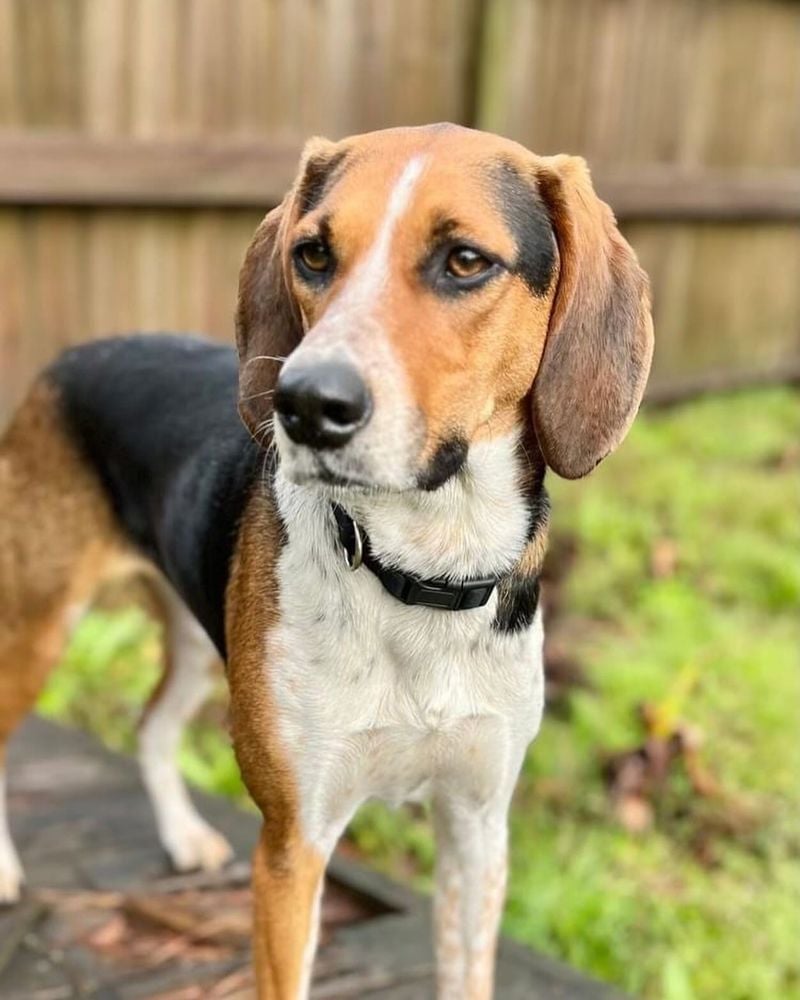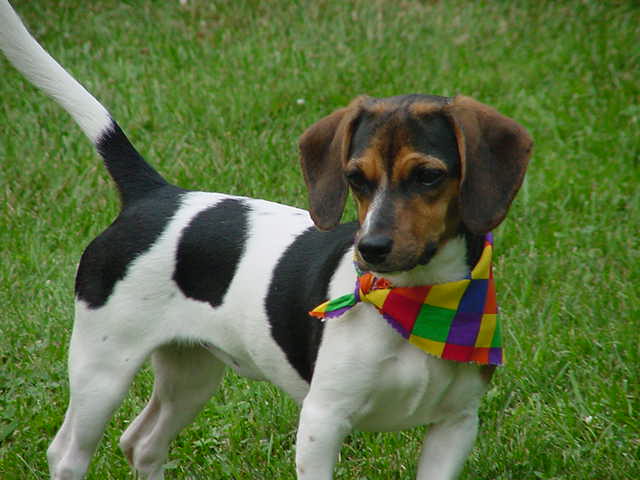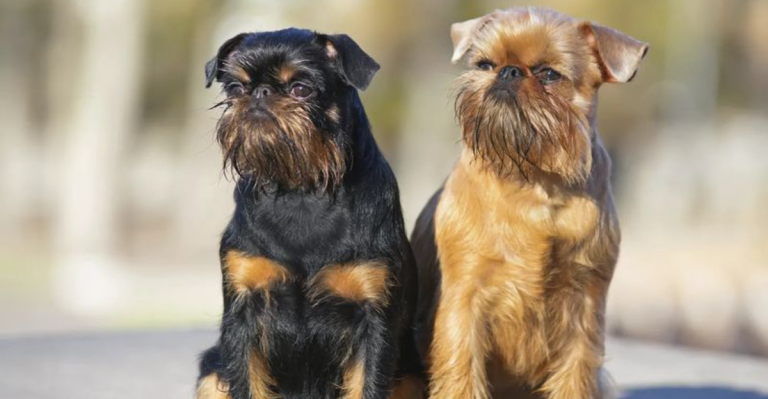20 Dog Breeds That Come With a Powerful Stink (And Why They Smell That Way)
We adore them for their loyalty, their goofy grins, and the unconditional love they shower us with — but let’s face it: some dogs come with serious stink. If you’ve ever been greeted at the door by a wagging tail and a wall of odor, you’re not alone.
From wet dog funk to mysterious musky clouds that seem to follow them like a shadow, certain dog breeds are known for packing a particularly pungent punch.
While it might be easy to blame poor hygiene or a skipped bath day, the truth is more complicated (and breed-specific) than that. Some dogs are simply born to smell.
Whether it’s due to oily coats that once protected them from icy waters, deep skin folds that trap moisture and bacteria, or long floppy ears that serve as cozy breeding grounds for yeast, the source of that signature scent often lies in centuries of evolution. For many breeds, the very traits that make them excellent hunters, swimmers, or cuddle buddies also make them walking, wagging odor machines.
But don’t worry — smelling strong doesn’t mean loving them any less. In fact, understanding why your dog smells the way they do can help you manage the funk, keep them healthier, and maybe even reclaim your nose’s sanity.
From wrinkly Bulldogs to water-loving Labradors and droopy-eared Spaniels, we’re counting down the breeds that are known not just for their adorable quirks, but also for their unmistakable scent.
1. Basset Hound
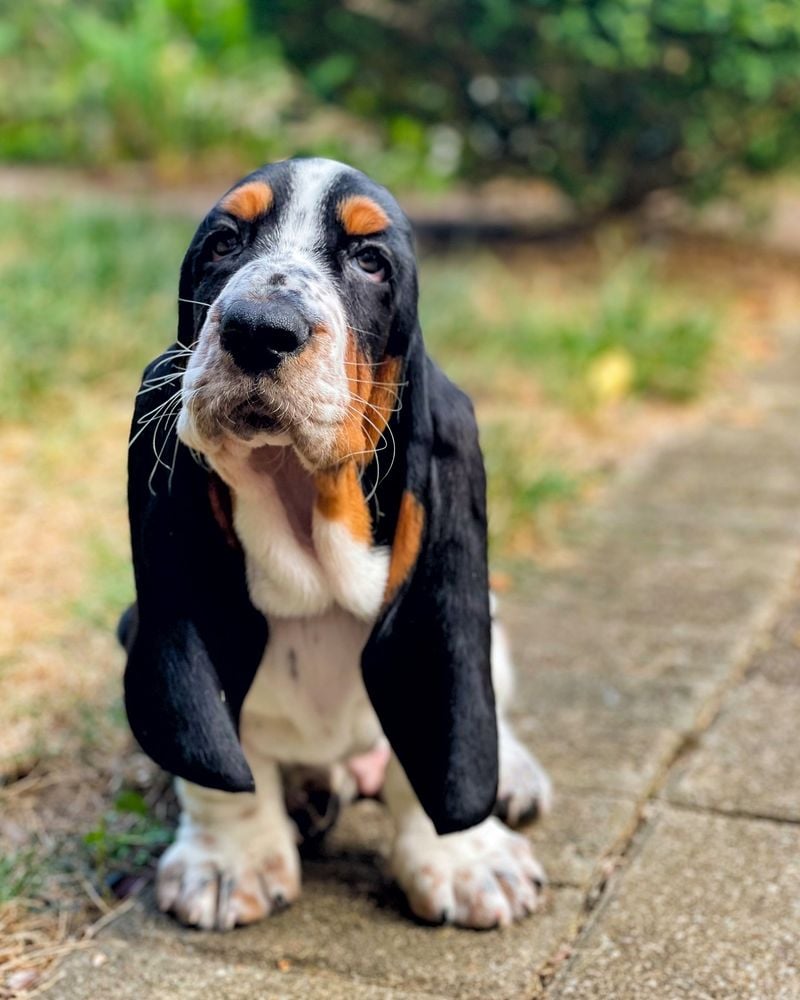
Those adorable droopy ears and wrinkled skin make Basset Hounds champion sniffers, but also champion stinkers! Their floppy ears trap moisture and limit air circulation, creating the perfect breeding ground for yeast and bacteria.
The numerous skin folds across their bodies collect oils, dirt, and debris that contribute to their distinctive musky odor. Regular cleaning of ears and skin folds is essential for these low-riding hounds.
Bassets also have particularly active oil glands that produce a natural waterproofing for their coat. While this protected their ancestors during hunting in wet conditions, it gives modern Bassets their unmistakable doggy perfume that lingers in homes.
2. Bloodhound
Ironically, the dog breed with the most powerful nose also has one of the most powerful body odors! Bloodhounds possess over 300 million scent receptors, making them unparalleled tracking dogs, but their scent-detecting prowess comes with a price.
Their loose, oily skin creates the perfect environment for trapping odors and breeding bacteria. Those iconic wrinkles and folds require regular cleaning to prevent buildup and infection.
Originally bred for hunting, their oily coat served as protection in rough terrain and wet weather. This same protective feature gives Bloodhounds their distinctive musty smell that owners recognize from across the room – even after bath time!
3. Cocker Spaniel
With their gorgeous flowing coats and sweet expressions, Cocker Spaniels charm everyone they meet – until you get a whiff of their distinctive odor. Their long, heavy ears create the perfect warm, dark environment for yeast and bacteria to multiply, leading to chronic ear infections and that telltale smell.
The Cocker’s thick double coat traps moisture against their skin, especially after swimming or bathing. Without proper drying and regular grooming, this moisture breeds bacteria that create strong odors.
Many Cockers also suffer from seborrhea, a skin condition causing overproduction of sebum (skin oil), which gives them a greasy feel and pungent aroma. Regular ear cleaning, proper coat maintenance, and veterinary care can help manage these smelly issues.
4. Shar Pei
Famous for their wrinkly appearance, Shar Peis carry their signature smell in those adorable folds. The deep skin wrinkles create dark, moist pockets where bacteria and yeast thrive, leading to infections and strong odors if not properly cleaned.
These unique dogs often struggle with a condition called Shar Pei fever, an inflammatory disorder that can cause skin problems and contribute to their distinctive smell. Regular fold cleaning with veterinarian-recommended wipes helps minimize odor buildup.
Shar Peis also tend toward food allergies, which can manifest as skin issues and exacerbate their smell problems. Their small ears, while cute, are prone to infections due to limited airflow in the ear canal – creating another source of potential stink.
5. Newfoundland
Gentle giants with hearts of gold, Newfoundlands were bred for water rescue with thick, water-resistant double coats. Unfortunately, this amazing coat is also the source of their powerful smell. Their dense fur traps moisture close to the skin, creating that classic “wet dog” smell that lingers even when they appear dry.
The Newfie’s sebaceous glands produce oils that waterproof their coat – essential for their historical water rescue work but problematic for modern indoor living. These oils have a distinct musky odor that intensifies when wet.
Their droopy jowls collect saliva and food particles, adding another dimension to their aromatic presence. Regular bathing with proper drying, thorough face wiping after meals, and consistent grooming helps manage the Newfie’s natural perfume.
6. Saint Bernard
Saint Bernards have saved countless lives in the Alps, but they can’t save your nose from their powerful odor. These massive mountain dogs are famous for their excessive drooling, and that slobber doesn’t just stain furniture – it creates a distinct smell as it dries on their fur, skin folds, and surroundings.
Their thick double coat traps dirt, debris, and moisture close to the skin. Without regular grooming, these particles decompose and create strong odors, especially during seasonal shedding when dead hair and skin cells accumulate.
Saint Bernards also have skin folds around their face and neck that collect moisture, food particles, and bacteria. Daily cleaning of these areas, particularly after meals, helps reduce the characteristic Saint Bernard smell that can fill a room.
7. Bulldog
Those adorable wrinkly faces that make Bulldogs so charming are also responsible for their distinctive aroma. The deep facial folds trap moisture, food particles, and debris, creating the perfect environment for odor-causing bacteria to flourish.
Many Bulldogs suffer from skin allergies and seborrhea that cause excessive oil production and flaky skin. These conditions not only make them itchy but contribute significantly to their unique smell.
Their compact bodies and short snouts lead to flatulence problems that add another dimension to their aromatic presence. Daily cleaning of facial folds with veterinarian-approved wipes, regular bathing with medicated shampoos, and proper diet management can help reduce a Bulldog’s signature stink.
8. Pug
Those expressive faces with deep wrinkles make Pugs irresistibly cute, but those same facial creases harbor a not-so-cute smell. Food particles, dirt, and moisture collect in these folds, creating ideal conditions for yeast and bacteria growth if not cleaned regularly.
Pugs’ compressed facial structure contributes to dental problems, with teeth crowded together allowing food to get trapped easily. Poor dental hygiene leads to bad breath that can make your Pug’s kisses less than pleasant.
Their compact body structure also makes Pugs prone to flatulence issues. Certain foods can trigger digestive upsets, adding another dimension to their aromatic presence. Daily facial fold cleaning, regular dental care, and proper diet management can help keep your Pug smelling as sweet as their personality.
9. Beagle
Beagles were bred for hunting, and part of their hunting heritage includes a distinctive hound odor that’s unmistakable to anyone who’s met one. Their skin produces natural oils that helped protect them during long hunting expeditions in various weather conditions.
Those adorable floppy ears restrict airflow and trap moisture, creating perfect conditions for yeast and bacteria to grow. Regular ear cleaning is essential to prevent infections that can make their natural smell even stronger.
Beagles also have a higher concentration of anal glands than some other breeds, which can contribute to their unique scent, especially when these glands become impacted. While their smell is part of their charm for true Beagle lovers, regular bathing with appropriate dog shampoos can help manage their natural aroma.
10. Chinese Crested
Despite their nearly hairless appearance that would seem to eliminate doggy odor, Chinese Cresteds can be surprisingly smelly! Their lack of fur means skin oils have nowhere to be absorbed, often giving them a greasy feel and distinct odor that surprises many first-time owners.
These unique dogs are prone to blackheads, acne, and other skin conditions that can create odor problems. Without protective fur, their skin is exposed to dirt and environmental contaminants that contribute to their smell.
Chinese Cresteds often have dental issues due to their genetic makeup, leading to bad breath that adds another dimension to their aromatic presence. Regular skin care with gentle cleansing, proper dental hygiene, and protection from excessive sun exposure helps manage both their health and their distinctive smell.
11. Labrador Retriever
America’s favorite dog breed brings plenty of love – and often plenty of smell! Labradors were bred for water retrieval, so they have a water-resistant double coat with oils that give them a distinctive doggy odor, especially when wet.
Labs love swimming and playing in water, which intensifies their natural smell. Their coat absorbs environmental odors like a sponge, bringing the scents of their outdoor adventures back inside with them.
These food-motivated pups often have digestive issues from eating things they shouldn’t, leading to gas problems that contribute to their aromatic presence. Regular bathing with appropriate shampoos designed for oily coats, proper diet management, and thorough drying after water activities helps keep your Lab smelling fresher.
12. Pekingese
Regal and dignified, the Pekingese carries itself like royalty – but its smell isn’t always so noble. Their incredibly dense double coat traps dirt, debris, and moisture close to the skin where bacteria thrive, creating a distinct odor that intensifies without regular grooming.
Those adorable flat faces come with dental crowding that makes Pekingese prone to tooth decay and gum disease. Poor dental health leads to bad breath that can be overwhelming in these small packages.
The Pekingese’s facial structure also includes skin folds that collect moisture and debris. Without daily cleaning, these areas become breeding grounds for bacteria and yeast. Regular professional grooming, daily facial fold maintenance, and proper dental care help keep these imperial pups smelling as regal as they look.
13. Chesapeake Bay Retriever
Bred to retrieve waterfowl in the harsh conditions of the Chesapeake Bay, these determined dogs have a distinctive oily coat that repels water – and emits a powerful smell. Their coat has more natural oils than other retrievers, giving them superior water resistance but also a stronger doggy odor that intensifies when wet.
Chessies have a unique coat texture that feels oily to the touch and has a distinctive wavy appearance. This special coat protects them in cold water but traps environmental odors and dirt close to the skin.
Their love of swimming in all water conditions means they often bring home the smells of ponds, lakes, and muddy shorelines. Regular bathing with shampoos specifically designed for oily coats helps manage their natural aroma without stripping away the protective oils their coats need.
14. English Springer Spaniel
English Springer Spaniels bound through life with enthusiasm – and often with a distinctive odor. Their long, feathered ears hang close to the ground, collecting dirt and debris while restricting airflow to the ear canal, creating perfect conditions for chronic ear infections and their associated smell.
The Springer’s medium-length double coat traps moisture against their skin, especially after their favorite activities: swimming and running through wet vegetation. Without proper drying and regular grooming, this moisture creates breeding grounds for odor-causing bacteria.
Many Springers suffer from skin allergies that cause excessive scratching, creating hot spots and secondary infections that contribute to their smell. Regular ear cleaning, proper coat maintenance with attention to drying after water activities, and prompt attention to skin issues help keep these energetic dogs smelling fresher.
15. Boxer
Boxers charm everyone with their expressive faces and playful personalities, but those adorable wrinkles around their muzzles can harbor some not-so-charming smells. The skin folds on their faces trap moisture, food particles, and dirt, creating ideal conditions for bacteria and yeast growth.
Many Boxers suffer from skin allergies that cause excessive scratching, leading to secondary infections and strong odors. Their short coats provide little barrier between skin oils and your furniture or hands.
Boxers are notorious for their gas problems, adding another dimension to their aromatic presence. Daily cleaning of facial folds with appropriate wipes, management of skin allergies through proper diet and veterinary care, and regular bathing help keep these playful pups smelling fresh without dampening their joyful spirits.
16. Great Pyrenees
Majestic mountain guardians with hearts as big as their bodies, Great Pyrenees were bred to protect livestock in all weather conditions. Their thick, double-layered white coats shed dirt naturally in the wild but trap oils, debris, and moisture in domestic settings.
These gentle giants drool considerably, especially after drinking water or during hot weather. This saliva often ends up on their chest and front legs, creating a distinct odor as it dries.
The Great Pyrenees’ coat is naturally water-resistant due to oils that protect them in harsh mountain conditions. While functional for outdoor guardian dogs, these oils give indoor Pyrs a distinctive musky smell that intensifies when wet. Regular brushing to remove trapped debris, proper drying after baths, and wiping drool regularly helps manage their natural mountain dog aroma.
17. Dachshund
Those adorable wiener dogs with big personalities often pack a surprising odor punch! Dachshunds are prone to dental problems due to their long, narrow jaws that crowd teeth together, making cleaning difficult. This dental crowding leads to tartar buildup, gum disease, and breath that can clear a room.
Many Dachshunds have skin fold issues, particularly around their necks and undercarriage. These folds trap moisture and debris, creating ideal environments for yeast and bacteria growth.
Dachshunds also have particularly active anal glands that require regular expression to prevent impaction and the associated strong odor. Regular dental care with appropriate chews and brushing, attention to skin fold cleaning, and proper anal gland maintenance helps keep these charming little hounds smelling as sweet as their personalities.
18. Gordon Setter
The gorgeous black and tan Gordon Setter was bred for hunting in the harsh Scottish Highlands, developing a coat with natural oils that protected them from the elements. These same protective oils give them a distinctive doggy smell that’s stronger than many other breeds.
Their long, feathered coats trap dirt, debris, and environmental odors close to the skin. Without regular grooming, these particles decompose and intensify their natural smell.
Gordon Setters have pendulous ears that restrict airflow and create warm, moist environments where bacteria and yeast thrive. Regular ear cleaning is essential to prevent infections that can make their natural aroma even stronger. Consistent grooming, appropriate bathing with shampoos designed for oily coats, and proper ear care help manage the Gordon’s distinctive Highland scent.
19. Neapolitan Mastiff
With massive bodies covered in loose, hanging skin, Neapolitan Mastiffs are walking wrinkle factories – and those wrinkles harbor powerful odors. Their numerous deep skin folds create dark, moist environments where yeast and bacteria thrive, producing strong smells if not cleaned regularly.
These gentle giants are champion droolers, with saliva that often ends up trapped in neck folds and chest wrinkles. As this saliva dries, it creates another layer of distinctive odor.
Neapolitan Mastiffs have naturally oily skin that helped protect their ancestors in various weather conditions. While beneficial for outdoor working dogs, this oiliness contributes to their powerful indoor aroma. Daily cleaning of skin folds with veterinarian-recommended wipes, regular bathing with appropriate shampoos, and prompt attention to any skin issues helps manage their monumental smell.
20. Coonhound
Born to track raccoons through swamps and forests, Coonhounds carry the distinctive musky scent that all hunting hounds share. Their skin produces natural oils that protected them during long hunts in all weather conditions, giving them a distinctive “hound odor” that’s unmistakable.
Those long, velvety ears that help waft scents to their sensitive noses also restrict airflow to the ear canal. This creates warm, moist environments perfect for bacterial and yeast infections that intensify their natural smell.
Coonhounds love wallowing in strong-smelling substances to mask their scent from prey – a behavior that might have helped in hunting but doesn’t translate well to living room settings! Regular bathing with appropriate shampoos, thorough ear cleaning, and prompt attention when they find something smelly to roll in helps manage their aromatic hunting heritage.


